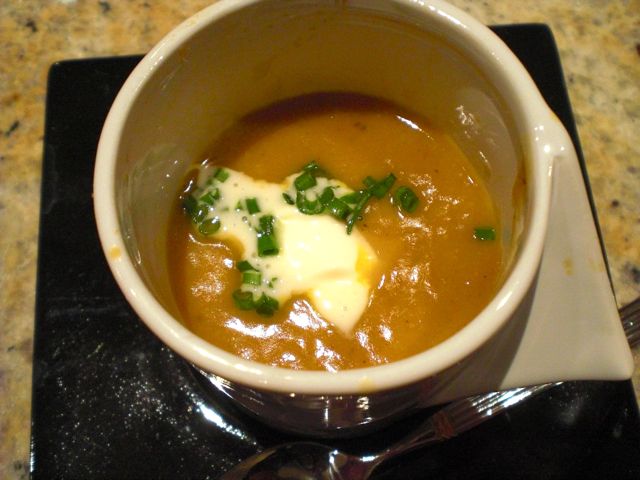This is a very interesting soup/potage and this can be a very good starter dish. Here we served it in a demitasse cup.

This was made by my wife. The soup is made with peeled and boiled chestnuts sold in a jar from France. (With the failure I experienced trying to use chestnuts-in-the-shell, we are sticking to pre-processed products like this one when the recipe calls for chestnuts).
She sauteed onions (one medium, roughly chopped), carrots (2 medium, peeled roughly chopped), and parsnip (4 small, peeled and chopped) for few minutes in butter (3 tbs). She then added the chestnuts (16oz) and low-sodium, fat free Swanson chicken stock (about 4 cups) and simmered for 30 minutes. Using an immersion blender she pureed the cooked mixture. She added more chicken broth to adjust the thickness of the soup and obtain a smoother texture. Then she seasoned with salt and white pepper. She served this garnished with a small dollop of creme fraiche and chopped chive.
The chestnuts give a very interesting sweet nutty taste which is complemented by the parsnips. The chestnuts and parsnips also add to a rich velvety texture of the soup. In all, this is a quite unique and good soup/potage.

